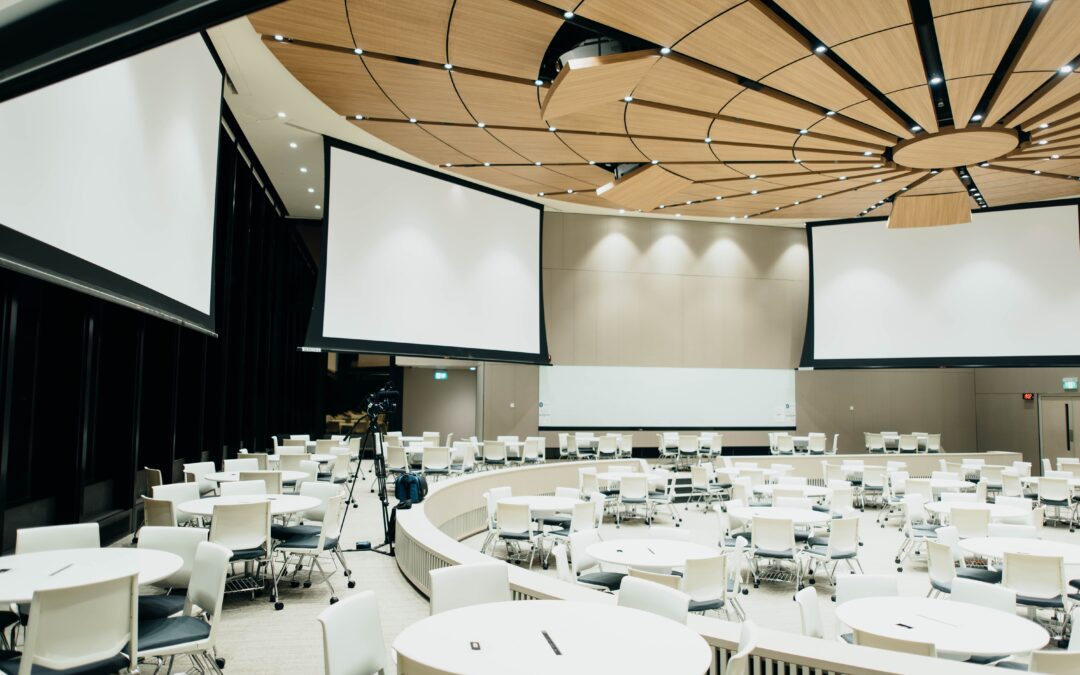Inclusive events recognise that its audience and attendees, no matter how niche or similar, have different physical, cultural, and accessibility needs and that these differences should not preclude anyone from attending and engaging with others at the event.
The need for inclusivity in events is extremely important to ensure that all participants, no matter their background or physical abilities, are able to get the most out of the event they’re taking part in.
It not only makes the event so much more accessible to different people, but gives the event a touch of humanity and heart by showing that all people are welcome.
Here are 7 steps to add a touch of inclusivity to your events:
1. Research
For starters, it is key to find out what the landscape is like. What is the situation regarding those with special needs? For example, the Singaporean Association of the Deaf have estimated that around 500,000 people in Singapore suffer from hearing loss. Singapore’s aging population has also called for a rise in those with mobility issues, such as those who require wheelchairs, walking canes, etc.
Meanwhile, understanding that aside from special physical needs, sometimes there are some conditions that may not be as visible, such as those who require help with learning.
Obtaining a general familiarity of the needs of different people will provide those who are organising and planning the event with a greater understanding of what needs to be done.
2. Understanding and Considering
Diving deeper into understanding what people need is the next step to creating an event that welcomes a wider range of people.
Before planning starts, various factors need to be considered. What do people need exactly?
Wheelchair ramps? Closed captions for the hard-of-hearing? Assistive audio for those with visual impairments? Or maybe even something more subtle, like having a greater colour contrast in your visuals for those with lower vision or color vision deficiency.
3. Clear Planning
Finally, planning begins! First on the list is the foundational planning and framework of the event. When you’ve finalised what your event is about, the location and its accessibility, the participants, and gain a rough idea of the activities that will be hosted on that day, it is time to factor in the inclusive aspects.
While curating content/activities, it would be great to check if any topics discussed or brought up that may potentially be controversial or might be sensitive, and to see if any warnings might need to be placed beforehand. Consider the audience and try to make the content interesting, engaging, or even relatable. Some factors to think about include age, gender, occupations, etc.
Meanwhile, it would also be good to keep the budget in mind while doing the planning, setting aside a margin for any potential costs that might come when including these new inclusive aspects. (E.g, hiring someone to create subtitles, setting up wheelchair ramps, etc.)
Researching for vendors/contractors or even collaborating with foundations (e.g. Association for people with special needs (ASPN), etc.) will allow for an even better experience when planning to accommodate a wider range of different needs.
4. Prepping and Accommodating
Now that everything has been planned out, preparations start, and it is time to zoom in on some finer details. Some things that could be done in this stage are surveying and troubleshooting.
For example, going to the actual event’s location and checking to see if there are potentially any issues that might hinder some people. (E.g. staircases, signboards with poor color contrast, etc.) and to quickly fix these problems.
5. Execution
Now, the event starts! Just like any other event, ensure communication with the teams are clear and that the participants will be comfortable at the event. This could include having ushers and assistants ready to assist the guests, or medical staff on stand-by trained to help anyone just in case.
Having a varied staff in terms of gender, spoken language, age, etc. can make the guests feel even more comfortable, as some people tend to feel more comfortable speaking to different types of people.
6. Follow Through
Checking up on the guests and getting updates from the various departments in charge during the events is a great way to make sure that the attendees are doing alright and that everyone is taken care of and given the suitable assistance.
7. Getting Feedback
Learning is an important part of life, and gaining feedback is one of the best ways to learn what was done well, and more importantly, what could be improved upon.
Obtaining feedback is good for taking note of what people need, and in the future, allows for a wider range of different needs to be considered, making future events even more inclusive.
Now, this begs the question. Is the trouble worth it?
When hosting an event, the main goal is often to ensure that all participants and guests have the best possible experience. Every aspect of an event reflects on the brand – and you want to be drawing the best possible attention to your cause or organisation and create new networks.
By incorporating inclusivity, it not only allows a wider variety of different people with different needs to participate, it also creates an atmosphere of acceptance and welcoming. It sends an important message to the audience – letting people know that their differences are accepted, and should not stop them from having as good of a time.
Although there might need to be some extra resources put into making a more inclusive environment, it is nonetheless a worthy and important investment. Not only will the attendees have an even greater experience, it will also leave a great impression of the organisers of the event and the brand.
It adds a touch of warmth and thoughtfulness to the event, allowing all to feel welcome to enjoy the event to the fullest.

